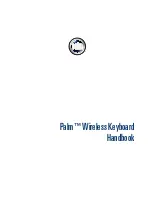
Sound Parameters – Arpeggiator
113
Waldorf Q User’s Manual
Arpeggiator
An Arpeggiator is a device that splits an incoming MIDI chord into its single notes and repeats them
rhythmically. Different sequence modes can be defined for the Arpeggiator to cover a wide range of
applications. In addition to the synthesis features, the Q offers a deeply programmable Arpeggiator for
every sound program. It can play a wide range of different rhythm patterns including accents and
different timings and allows creating sophisticated custom rhythm patterns.
The Arpeggiator uses a so-called note list that can store up to 16 notes. This list is set up depending
on the Arpeggiator parameter settings. For example, when
Sort Order
is set to Num Lo>Hi, the list is
rearranged so that the lowest note is placed at the first position, the second lowest note at the next
and so on. See the individual parameter descriptions, if and how a parameter alters the list.
Arpeggiator Panel Controls
The most commonly used controls of the Arpeggiator can be found on the front panel.
On
One Shot
Hold
Select
Edit
Range
Clock
Tempo
Arpeggiator
Picture 36:
Arpeggiator Section Q Keyboard
The basic tempo of the Arpeggiator is set by the global
Tempo
control that also controls the Step
Sequencer and the behaviour of the LFO and Envelopes. This allows you to change all tempo-related
aspects of the sound with one single turn of the
Tempo
control.
Mode
Off / On / One Shot / Hold
This parameter sets the way the Arpeggiator works.
•
If Off is selected, the Arpeggiator is not active.
•
If On is selected, the Arpeggiator is active. When you press a note or a chord on the
keyboard or via MIDI, it is split up and repeated rhythmically. As soon as you release a
note, it is removed from the arpeggio rhythm. Vice versa, as soon as you add another note
to the existing chord, it is inserted into the arpeggio. When you release all notes, the
Arpeggiator stops.
•
If One Shot is selected, the Arpeggiator splits up all played notes and plays back an
arpeggio. The actual length of this arpeggio is set by the
Pattern Length
parameter. After
the arpeggio rhythm was played once, it is stopped automatically unless you hit a new
chord. This mode is especially useful in a live performance where you might have to
“synchronize” yourself to e.g. a drummer. Just hit a new chord on each new bar.
•
If Hold is selected, the Arpeggiator splits up all played notes and generates a continuous
arpeggio even when the chord is released. This gives you two ways of entering a chord:
Содержание Q Rack
Страница 1: ...User s Manual Q Keyboard Q Rack ...
Страница 170: ...Appendix MIDI Implementation Chart Waldorf Q User s Manual 170 ...
Страница 172: ......
Страница 173: ......
















































